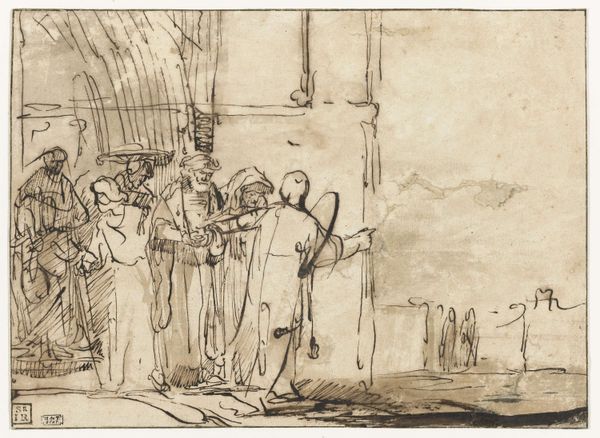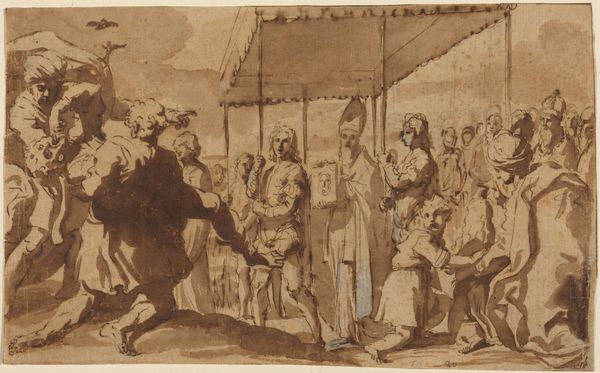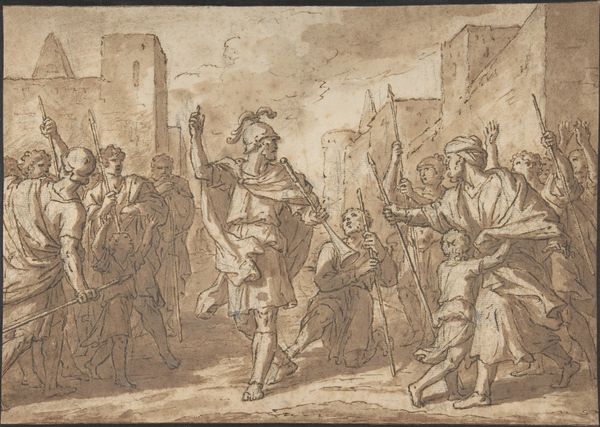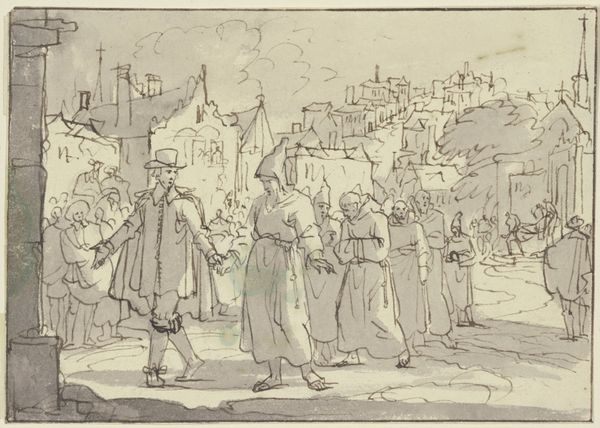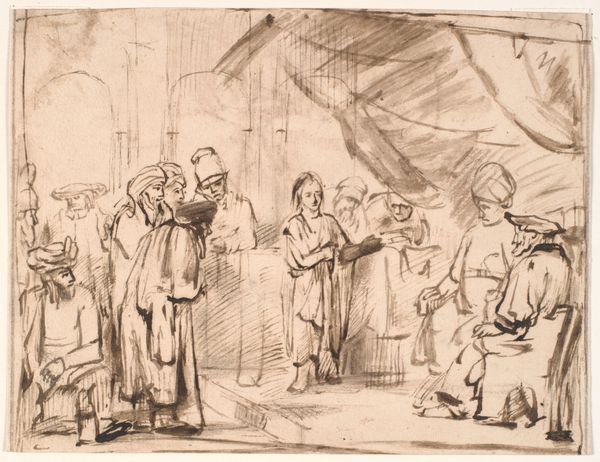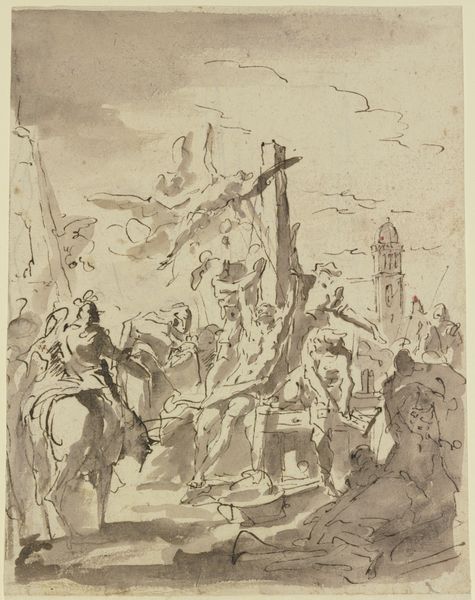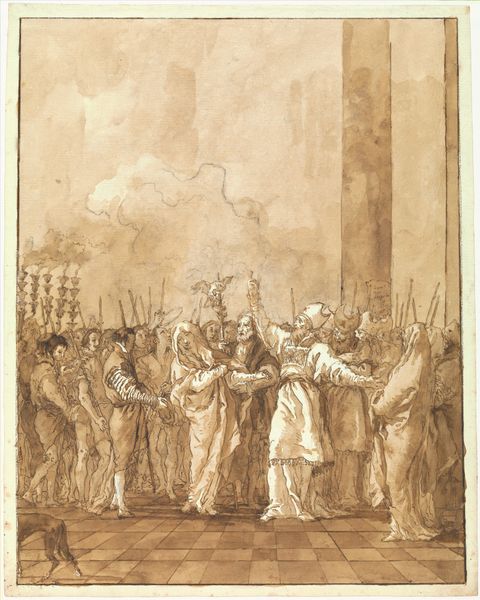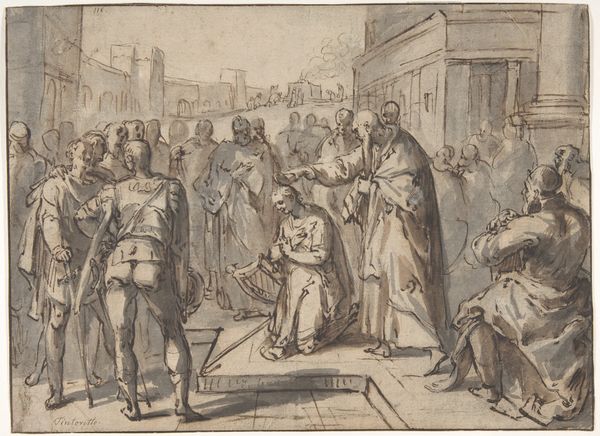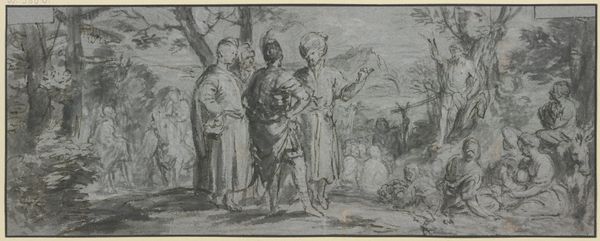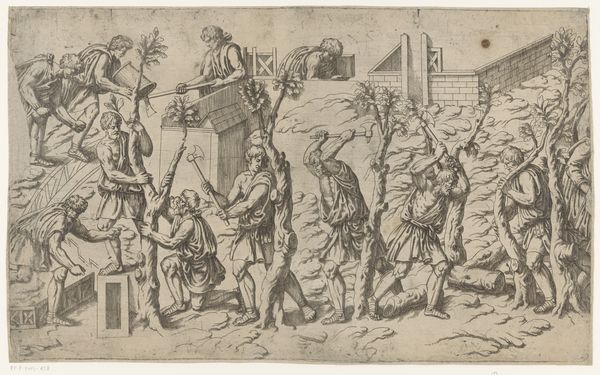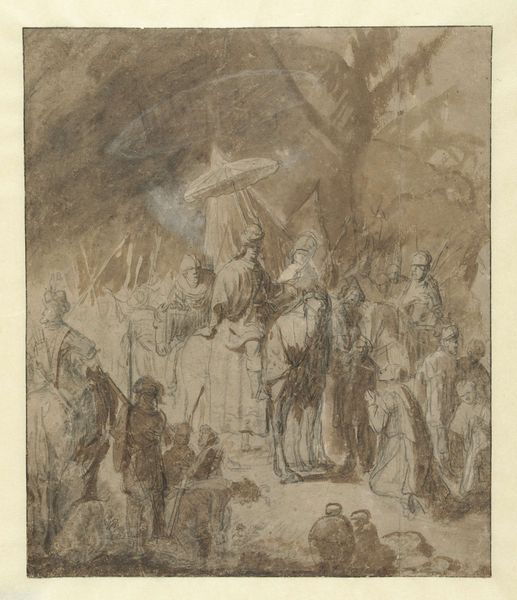
drawing, ink
#
drawing
#
ink drawing
#
narrative-art
#
baroque
#
figuration
#
ink
#
history-painting
Copyright: Public Domain
Curator: This is an ink drawing by Jan Luyken, titled "Tod des Antonius Ijsbaarts zu Tielt," created around 1685. It's currently held at the Städel Museum. Editor: It's stark, isn't it? The frantic, sketchy lines convey a sense of immediate, brutal action. It's unsettling. Curator: Luyken was known for his detailed narrative scenes, often depicting historical or religious events with a moral dimension. This work illustrates the execution of Antonius Ijsbaarts. Editor: The central figure with the sword dominates the composition. The torch and shield beside him feel almost allegorical – are we witnessing justice, or simply violence cloaked in righteousness? Curator: That’s a pertinent question, given the religious and political upheavals of the period. Executions were public spectacles, carefully staged to reinforce state power and religious doctrine. Luyken's choice of subject matter undoubtedly speaks to the power dynamics of the era. Editor: Note how the eyes of the bound man look towards the sky – such a loaded symbol, the ultimate appeal for justice or salvation, a trope spanning centuries. It's about power but also, I think, about defiance, hope in the face of death. Curator: The onlookers are fascinating; some are clearly defined, while others fade into the background. Is that commentary on levels of complicity or simply masterful control of focus by Luyken? It prompts us to question how power implicates all of society. Editor: Precisely! The background figures give this terrible scene context – a societal stamp of approval or passive observation. It reflects how imagery could be leveraged to legitimize even the most brutal acts, which Luyken surely understood. Curator: Absolutely. It's a potent reminder that even art created centuries ago can reflect present-day concerns about power, justice, and how we visually remember—or sanitize—historical narratives. Editor: It truly makes one consider the ongoing dialogue between imagery and cultural memory, and how artists throughout time have wrestled with visualizing power, and often, exposing its terrifying consequences.
Comments
No comments
Be the first to comment and join the conversation on the ultimate creative platform.
